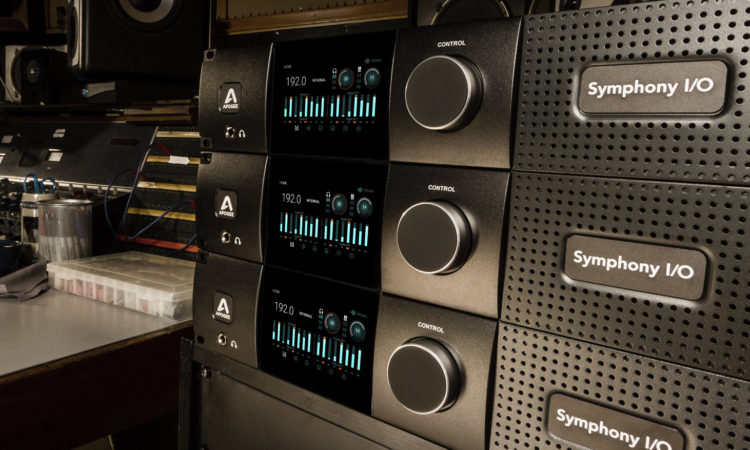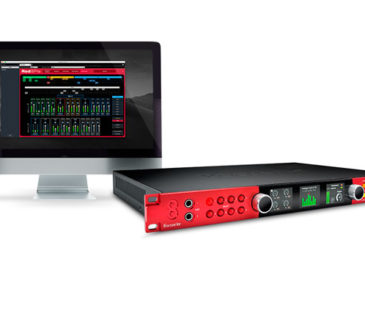
The much-anticipated Apogee Symphony I/O MK II is here. Building on the success of its predecessor, the MK II is Apogee’s newest flagship interface, offering AD/DA conversion, modular I/O (up to 32 inputs and outputs), intuitive touch screen display and optional world-class microphone preamps. Designed with the highest sound quality in mind, the Symphony I/O MK II is the ultimate music production centerpiece for any modern studio whether it’s used for audio recording, mixing or mastering. The all-new Symphony I/O connects via one of three platforms – Thunderbolt, Pro Tools HD or Waves SoundGrid network.
Apogee has first released the Symphony I/O MK II on the Thunderbolt platform, with Pro Tools HD expected Spring 2016 and Waves SoundGrid to follow later in the year. Four base configurations are available, the 2×6, 8×8, 16×16 or 8×8 with 8 mic preamps and you can easily expand your I/O as and when the need arises. The newly designed chassis can hold two modules with a maximum capacity of 32 inputs and outputs of world-class AD/DA conversion per unit with ultra-low latency performance. There is even a chassis only option, which allows users to install their existing Symphony I/O cards into the all-new Thunderbolt housing to take advantage of the new features on offer.
The Symphony I/O MK II features a high-resolution TFT display delivering visual feedback of your recording and monitoring. At a glace you can see metering for up to 64 channels of I/O as well as signal levels, polarity, muting, phantom power and Soft Limit. All of the essential settings of the Symphony I/O can be accessed directly from the front panel. Change your input selection, monitoring levels, mic pre gain or calibrate your Symphony I/O MK II to match the levels of the other analog gear in your system.
Apogee have always designed their products with the highest sound quality at the forefront of the process, the Symphony I/O MK II benefits from 30 years of this way of thinking. The MK II features the most refined analog-to-digital converter Apogee have ever designed, the analog stage uses the same differential op-amps found in the original Symphony I/O but has been streamlined to provide the most transparent path to the A/D stage possible. The result is the lowest distortion and greatest dynamic range of any A/D converter to date. The D/A section in the Symphony I/O MK II has been optimised with a more powerful, robust analog driver, which is now capable of driving virtually any input with no decrease in performance.
The optional mic pre module found in the MK II includes 8 channels of digitally-controlled analog inserts, allowing processors such as EQ and compressors to be inserted into the signal path between the mic preamp and the A/D conversion stage. With the help of Apogee’s Maestro software any insert can be assigned to any input channel, meaning there’s no need to physically reconnect your outboard equipment to a different insert channel. Maestro software controls all aspects of your device and system settings in a single interface window, set your input types, change your I/O routing and use the mixer for low latency monitoring.
We were lucky enough to have Rob from Apogee come down to ESV HQ to give us a hands-on run down of the stunning new Symphony I/O MK II prior to its release. Take a look below:
The Symphony I/O MK II Thunderbolt is now shipping; you can order yours from our online web store or for more information:
For more information on your audio and video production needs; please call ESV now on 020 3137 2901 or email us at: [email protected].



